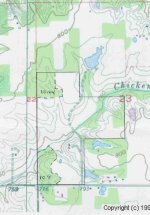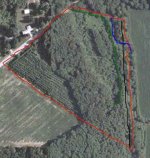qstott
Silver Member
We planted trees in those fields that were not as suitable for farming, because of the size, dampness, or ease of access. We didn't really want to remove good farm land from use, just to plant trees. We may plant more later, but for now, we asked the farmer what he considered good fields to plant, and which ones he would rather not plant. In the south, pines can be thinned after about 16 years with an expected income of 1,000-1,500 an acre. After 24 years or so they should be thinned again, with an expected income of around 4,000 dollars an acre. Pines are considered to be mature when they are 16" in diameter at breast height. That usually takes about 32 years. Hardwoods take much longer to mature. I will not get any benefit from the hardwoods I planted. I'm 52 now, and don't expect them to be harvested during my lifetime. My children, hopefully, will reap the rewards. The gap to be concerned about, is after the 15 year period, and before the trees are harvested. In our area, you can profit more from the CRP program per year than renting land for farming, but it only last 15 years. Even with pines, that leaves about 9 years without any substantial income per acre. If you can keep the taxes paid during that time, it might be a good idea to put it all in trees. We decided not to plant all the cleared land on our farm in trees. We have about 100 acres, 1/2 of which is already wooded. 1/2 of the wooded is close to maturity (another 3 or 4 years), and the other 1/2 will be about 15 years before harvest. It's much easier to convert clear farm land to woods that the other way around. We didn't want to "put all of our eggs in one basket". Right now we have about 40 acres of "farm" land left. The smart thing to do (IMHO), is to plant trees in stages. That way you can kind of rotate the havest schedule, and have a more consistant income. Bear in mind, the assistance for planting may not always be there, and reforestation can be expensive without subsidies.



